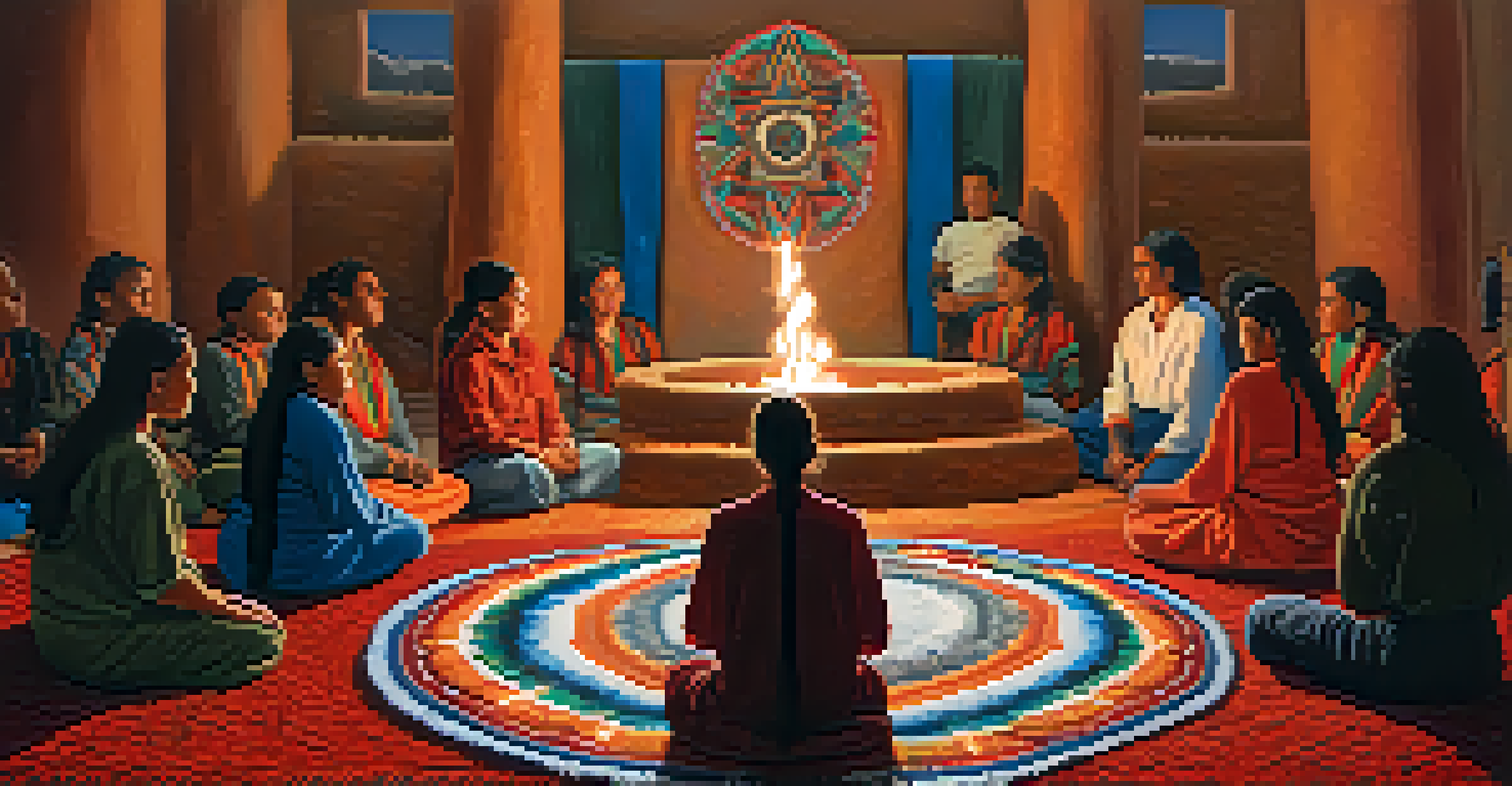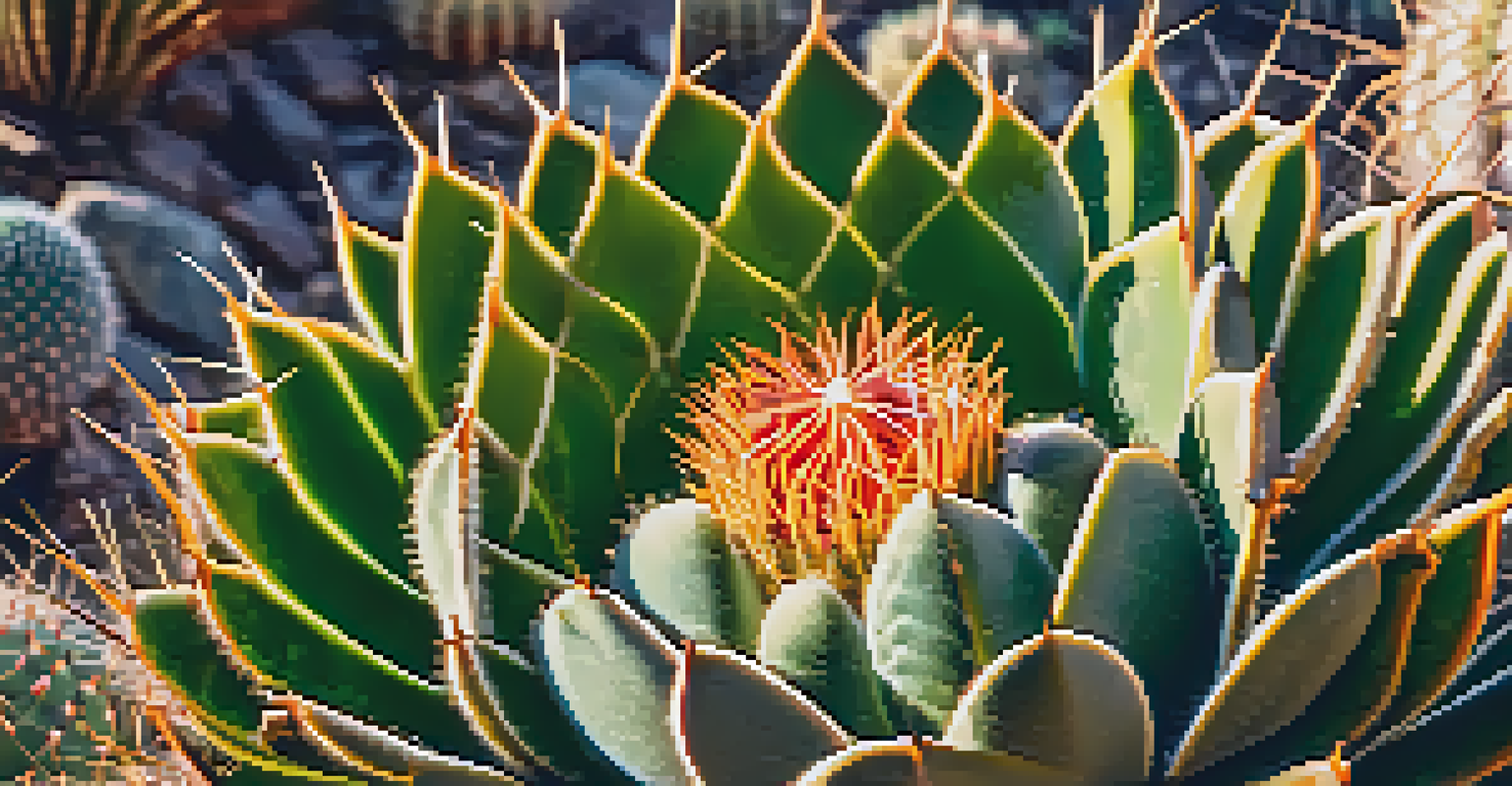The Intersection of Peyote Use and Indigenous Healing

Understanding Peyote: Origins and Cultural Significance
Peyote, a small cactus native to Mexico and the southwestern United States, holds deep cultural significance for many Indigenous tribes, particularly the Huichol and the Navajo. Traditionally, this plant is revered not just for its psychoactive properties but also for its spiritual importance, often used in ritualistic ceremonies. The use of peyote connects individuals to their heritage, fostering a sense of identity and community among those who partake in its consumption.
The use of peyote connects individuals to their heritage, fostering a sense of identity and community among those who partake in its consumption.
Historically, peyote has been used for thousands of years, with its earliest documented use tracing back to around 5,700 years ago. It has been a central part of various spiritual practices, symbolizing a bridge between the physical and spiritual realms. For many Indigenous people, consuming peyote is not merely about the experience; it's a sacred act of communion with their ancestors and the natural world.
As modern society begins to acknowledge and respect Indigenous practices, understanding the cultural context of peyote use is essential. Recognizing its significance allows for a deeper appreciation of the role it plays in healing, spirituality, and community bonding among Indigenous peoples.
The Role of Peyote in Indigenous Healing Practices
Peyote has been integrated into Indigenous healing practices for centuries, often serving as a catalyst for physical, emotional, and spiritual healing. During ceremonies, individuals consume peyote in a controlled environment, guided by a healer or shaman who facilitates the experience. This collective setting creates a supportive atmosphere for personal and communal healing, allowing participants to confront their traumas and gain insights into their lives.

The psychoactive compounds in peyote, specifically mescaline, can lead to altered states of consciousness that many users describe as transformative. These experiences often help individuals connect with their inner selves and the universe, promoting a sense of clarity and understanding. Such revelations can lead to profound changes in perspective, aiding in the healing process by fostering forgiveness and acceptance.
Peyote's Cultural Significance
Peyote serves as a vital spiritual and communal element for Indigenous tribes, connecting individuals to their heritage and community.
Moreover, the communal aspect of peyote ceremonies reinforces social bonds and reinforces cultural identity. Participants often report feelings of unity and belonging, which are crucial for emotional healing. Thus, peyote acts as a tool not just for individual healing but also for strengthening community ties.
Scientific Perspective: Benefits and Risks of Peyote Use
While traditional Indigenous practices emphasize the spiritual and communal aspects of peyote, scientific research has begun to explore its potential therapeutic benefits. Studies suggest that mescaline can help alleviate symptoms of anxiety, depression, and PTSD, providing a new avenue for healing that complements traditional methods. These findings have sparked interest in integrating peyote into modern therapeutic practices, particularly in treating trauma-related disorders.
Cultural appropriation occurs when elements of one culture are taken by another without permission or understanding, often leading to exploitation.
However, it's essential to approach this topic with caution. The unregulated use of peyote outside of its cultural context can lead to misuse and a misunderstanding of its significance. Additionally, there are legal and ethical concerns surrounding the extraction and commercialization of peyote, which is a protected species in many areas. Understanding these dynamics is crucial for respecting Indigenous rights and traditions.
Balancing traditional practices with modern scientific perspectives presents an opportunity for collaboration and mutual learning. As research continues to explore the benefits of peyote, it’s vital to ensure that Indigenous voices lead these conversations, preserving the sacredness of their traditions while also examining the plant’s potential in contemporary healing.
Cultural Appropriation vs. Appreciation in Peyote Use
The intersection of peyote use and Indigenous healing practices raises important questions about cultural appropriation. As interest in psychedelics grows, some non-Indigenous individuals seek to use peyote without understanding its cultural significance. This practice can dilute its meaning and disrespect the traditions of Indigenous peoples who have used it for generations in sacred settings.
Cultural appropriation occurs when elements of one culture are taken by another without permission or understanding, often leading to exploitation. In the case of peyote, it’s crucial to recognize that for many Indigenous peoples, its use is not simply recreational; it is a deeply spiritual and communal experience. This distinction is essential for fostering respect and understanding across different cultures.
Therapeutic Potential of Peyote
Research indicates that mescaline, a compound in peyote, may alleviate symptoms of anxiety and depression, opening new avenues for healing.
On the other hand, cultural appreciation involves recognizing and valuing the significance of peyote in its rightful context. Engaging with Indigenous communities, learning from their practices, and supporting their rights to their traditions can pave the way for a more respectful exchange. This approach fosters mutual respect and honors the sacred nature of peyote in Indigenous healing.
Peyote and the Legal Landscape: Current Status
The legal status of peyote is complex and varies widely across different regions and countries. In the United States, peyote is classified as a Schedule I controlled substance, meaning it is illegal to possess or use outside of religious contexts. However, members of the Native American Church are permitted to use peyote in their ceremonies, highlighting a unique legal exemption that recognizes its cultural significance.
In recent years, there has been growing support for reevaluating the legal status of peyote and other psychedelics, driven by increasing interest in their therapeutic potential. Advocacy groups are pushing for legislation that would allow for regulated use in therapeutic settings while respecting Indigenous rights. This movement represents a shift in societal attitudes towards psychedelics and their potential benefits.
Navigating the legal landscape surrounding peyote requires careful consideration of Indigenous rights and cultural integrity. As discussions about psychedelic legalization continue, it is crucial to ensure that Indigenous communities are actively involved in these conversations, protecting their traditions and practices while exploring new avenues for healing.
Personal Stories: Healing Narratives Through Peyote Use
Personal stories from individuals who have participated in peyote ceremonies provide valuable insights into its healing power. Many report transformative experiences that have led to emotional breakthroughs, enhanced self-awareness, and a greater connection to their cultural roots. These narratives not only highlight the personal impact of peyote but also illustrate the communal nature of the ceremonies, where shared experiences foster deeper bonds among participants.
For instance, one participant shared how a peyote ceremony helped them confront deep-seated grief after losing a loved one. Through the guided experience, they felt a profound sense of release and healing, enabling them to process their emotions in a supportive environment. Such stories emphasize the potential of peyote to facilitate healing journeys that are deeply personal yet collectively shared.
Respecting Indigenous Traditions
It is crucial to distinguish between cultural appropriation and appreciation to honor the sacredness of peyote in Indigenous healing practices.
These narratives also serve as a reminder of the importance of respectful engagement with Indigenous practices. They underline the necessity of understanding the cultural context of peyote use and the responsibility that comes with it. By listening to and amplifying the voices of those who have experienced its healing, we can better appreciate the profound impact of peyote in Indigenous healing traditions.
Looking Ahead: The Future of Peyote in Healing Practices
As society grapples with mental health challenges, the future of peyote in healing practices looks promising yet complex. There is a growing interest in integrating traditional Indigenous knowledge with contemporary therapeutic approaches, opening doors for collaboration and mutual understanding. This intersection could lead to new models of healing that honor Indigenous traditions while addressing modern mental health needs.
However, navigating this future requires a commitment to ethical practices and respect for Indigenous sovereignty. Ensuring that Indigenous communities are not only involved but also lead these conversations is crucial for maintaining the integrity of their traditions. This approach would also help prevent the commodification of peyote and safeguard its sacredness.

Ultimately, the future of peyote in healing practices hinges on our collective ability to engage respectfully with Indigenous cultures. By fostering dialogue, supporting Indigenous rights, and prioritizing cultural sensitivity, we can create a path forward that honors the rich heritage of peyote while exploring its potential in modern healing.